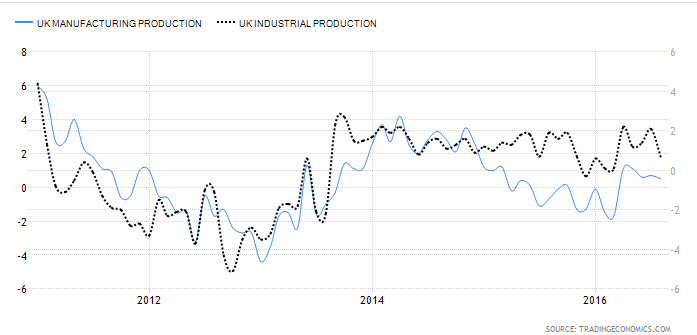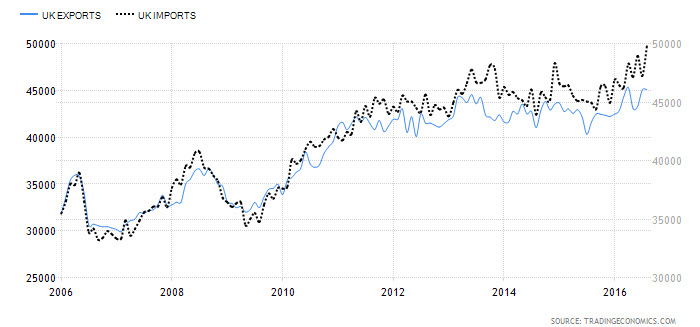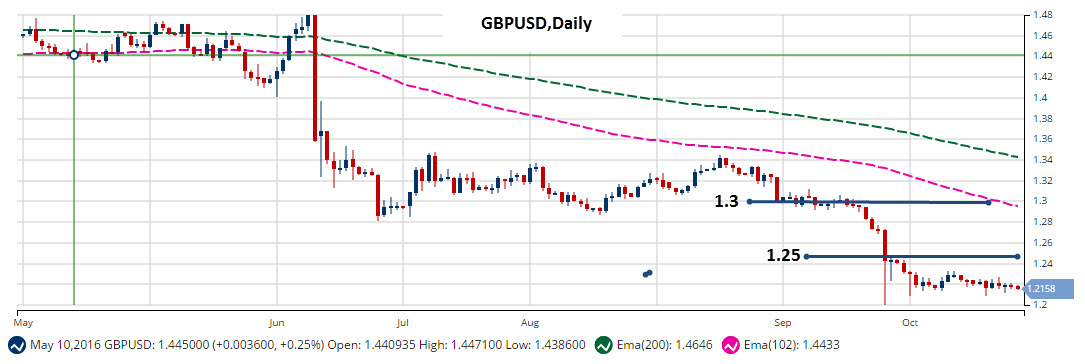
Ever since the surprise leave vote in the UK, investors have braced for a financial tsunami that could overwhelm the UK economy. Thus far, there has only been one real casualty—the Pound Sterling. All the while, the UK economy has surprised forecasters. The UK Manufacturing PMI already bounced back to an impressive 55.4; retail sales were surprisingly resilient and, most puzzling to economists, UK 3rd quarter GDP grew at a healthy clip of 2.3% Q3 year-over-year. So, what is really going on?
Sterling Counters Brexit
Since the results for Brexit were published back on June 24th, the Pound Sterling collapsed by 17% against the US Dollar and the Japanese Yen and the Euro. But even as the Sterling was crashing, stocks in London were taking off. The FTSE100 gained 12%, the FTSE 350 returned 10% and even the FTSE Small Cap Index gained 10%. That’s compared to 7% of the DAX and a little less than 2% for the S&P500. In real Dollar terms, UK indices are down, but by 9% on average, less than half the decline in the Sterling.
What it means is that a lower Sterling balances out some of the fallout for the UK economy. UK exporters of goods are now cheaper than their European peers and companies that gain in foreign currency make more money in Sterling terms. It also means that labor costs in the UK, in Dollar terms, are cheaper, meaning more competitive as well.
In fact, the impact of a weaker Sterling is also starting to show in economic sentiment. As can be seen in the charts below. The UK Manufacturing PMI rebounded impressively, Services PMI recovered as well, And, as we mentioned; GDP growth was fair and retail sales held well growing by 4.1% Year Over Year.

Chart courtesy of Tradingeconomics
And yet, if we go back to the UK stock market, in real Dollar terms, they are still down vs. peers in other countries, suggesting there is still some pain. The reason? Most of the fallout from Brexit is expected to be evened out by the industrial and manufacturing sectors which gain from a weaker Pound Sterling.
But, while PMIs are showing a bounce in sentiment, real trade data is still soft. Manufacturing production is growing less than 1% Year over Year for three months straight, and industrial production slowed to 0.7% Year over Year below the 1.3% expected. Moreover, the UK’s trade deficit has widened, and although it is primarily due to larger imports of gold, it still shows stagnant export growth. In other words, while businesses are optimistic about prospects (as the PMIs suggests), real trade data has yet to show how a weaker Sterling helps. Up until now, a weaker Sterling may have softened the blow, but it has yet to show that enough momentum can be generated to overcome the fallout from uncertainty under Brexit.

Chart courtesy of Tradingeconomics
What Does It Mean For Sterling?
Sterling investors need to keenly watch the relationship between UK stocks and the Pound Sterling. If UK stocks continue to surge while Sterling holds rather than collapses, it could be the first signs of a Sterling recovery in the more immediate short-term, with the 1.25 in the gunsight for the GBPUSD. But, if exports and the trade balance start to improve as well, it means that the boost from a lower Sterling is starting to overcome the Brexit fallout and that will be the cue for a wider Sterling recovery, potentially crawling back to the 1.3 level.

Chart courtesy of MarketClub
Look for my post next week.
Best,
Lior Alkalay
INO.com Contributor - Forex
Disclosure: This article is the opinion of the contributor themselves. The above is a matter of opinion provided for general information purposes only and is not intended as investment advice. This contributor is not receiving compensation (other than from INO.com) for their opinion.
